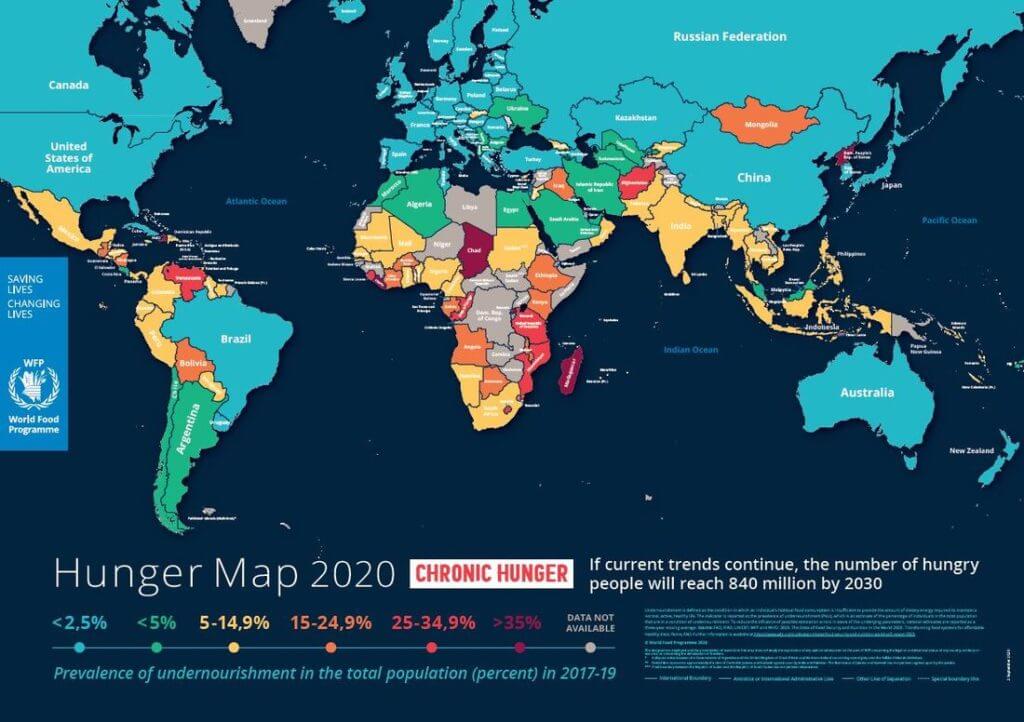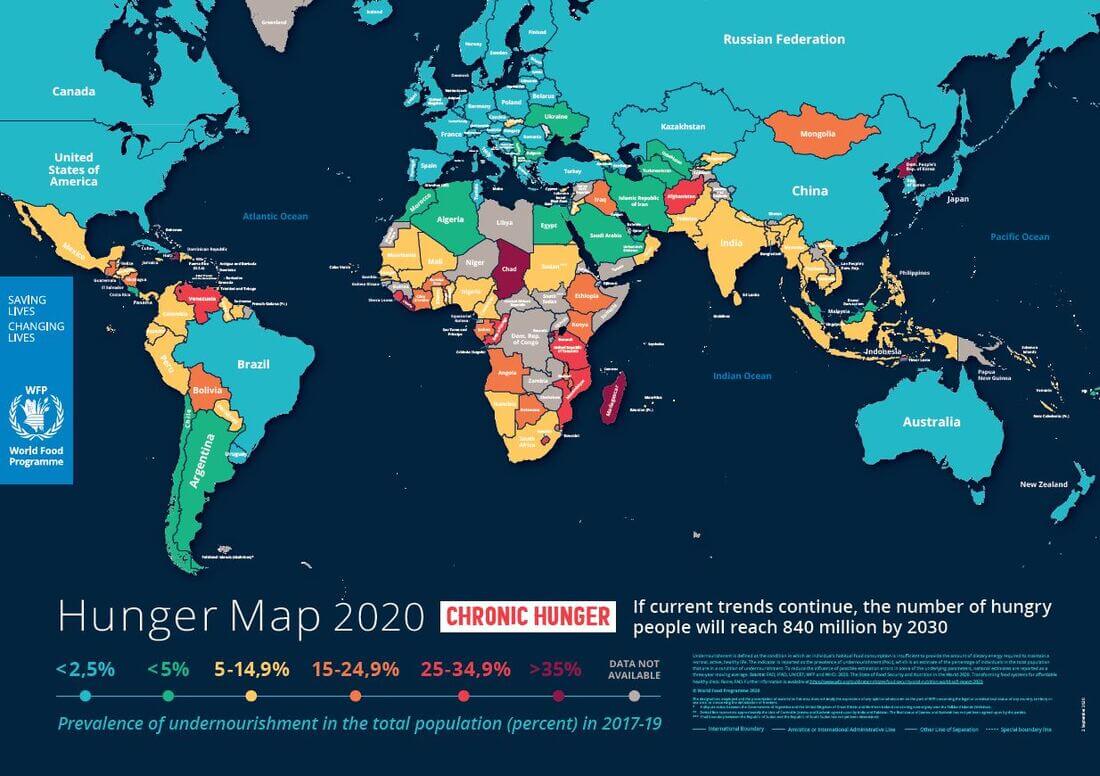
Every day too many men and women across the globe struggle to feed their children a nutritious meal. In a world where we produce enough food to feed everyone, 821 million people – one in nine – still go to bed on an empty stomach each night. Even more – one in three – suffer from some form of malnutrition.
Eradicating hunger and malnutrition is one of the great challenges of our time. Not only do the consequences of not enough – or the wrong – food cause suffering and poor health, they also slow progress in many other areas of development like education and employment.
In 2015 the global community adopted the 17 Global Goals for Sustainable Development to improve people’s lives by 2030. Goal 2 – Zero Hunger – pledges to end hunger, achieve food security, improve nutrition and promote sustainable agriculture, and is the priority of the World Food Programme.
Every day, WFP and its partners work to bring us closer to a zero hunger world. With our humanitarian food assistance, we provide nutritious food to those in urgent need. Meanwhile our complementary programmes address the root causes of hunger, building the resilience of communities, so we don’t need to keep saving the same lives each year.
The world has made great progress in reducing hunger: There are 216 million fewer hungry people than in 1990-92, despite a 1.9 billion increase in the world’s population. But there is still a long way to go, and no one organization can achieve Zero Hunger if it works alone. If we want to see a world free of hunger by 2030, governments, citizens, civil society organizations and the private sector must collaborate to invest, innovate and create lasting solutions.
